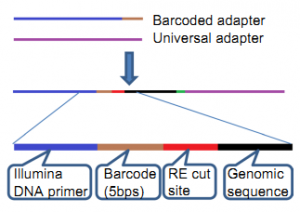|
Cellulose synthase complexes act in a concerted fashion to synthesize highly aggregated cellulose in secondary cell walls of plants
Friday, 2016/10/07 | 08:10:25
|
|
Shundai Li, Logan Bashline, Yunzhen Zheng, Xiaoran Xin, Shixin Huang, Zhaosheng Kong, Seong H. Kim, Daniel J. Cosgrove, and Ying Gu SignificancePlant cell walls are important in plant development and for textiles, wood products, and bioenergy. Cellulose, the microfibrillar component of primary cell walls (PCWs) and secondary cell walls (SCWs), is formed by cellulose synthase complexes (CSCs) at the plasma membrane. Here, we show that CSCs behave differently during PCW and SCW synthesis and form microfibrils with different organization. During PCW synthesis, dispersed CSCs synthesize cellulose microfibrils with low aggregation, whereas during SCW synthesis, densely arranged groups of CSCs move coherently to synthesize highly aggregated microfibrils. Our study suggests that controlled alterations in CSC distribution and orchestrated movements contribute to the high density and bundling of cellulose microfibrils in SCWs. AbstractCellulose, often touted as the most abundant biopolymer on Earth, is a critical component of the plant cell wall and is synthesized by plasma membrane-spanning cellulose synthase (CESA) enzymes, which in plants are organized into rosette-like CESA complexes (CSCs). Plants construct two types of cell walls, primary cell walls (PCWs) and secondary cell walls (SCWs), which differ in composition, structure, and purpose. Cellulose in PCWs and SCWs is chemically identical but has different physical characteristics. During PCW synthesis, multiple dispersed CSCs move along a shared linear track in opposing directions while synthesizing cellulose microfibrils with low aggregation. In contrast, during SCW synthesis, we observed swaths of densely arranged CSCs that moved in the same direction along tracks while synthesizing cellulose microfibrils that became highly aggregated. Our data support a model in which distinct spatiotemporal features of active CSCs during PCW and SCW synthesis contribute to the formation of cellulose with distinct structure and organization in PCWs and SCWs of Arabidopsis thaliana. This study provides a foundation for understanding differences in the formation, structure, and organization of cellulose in PCWs and SCWs.
See http://www.pnas.org/content/113/40/11348.abstract.html?etoc PNAS October 4 2016; vol.113; no.40: 11348–11353
Fig. 1. SCWs of transdifferentiated xylem cells exhibit highly aggregated, bundled cellulose microfibrils and exhibit spectral characteristics that are similar to native SCWs. (A–G) 35S::VND7-GR seedlings were treated for 60 h with 20 μM DEX to induce transdifferentiation (A–D and G) or an equal volume of the solvent, dimethyl sulfoxide (DMSO), as a nontransdifferentiation control (E and F). White brackets denote autofluorescent lignified SCW thickenings in a confocal image (A). Black brackets denote SCW thickenings in FE-SEM images of intact transdifferentiated cells of an epidermal peel (B and C). White brackets denote SCW thickenings at the inner surface of transdifferentiated cells that were broken open with a focused ion beam (C and D). The asterisked arrowhead in C indicates the region magnified in D. Cellulose microfibrils of PCWs at the inner surface of DMSO control, nontransdifferentiated epidermal cells are less bundled (E and F) than those of SCWs in transdifferentiated cells (D and G). (Scale bars: A–C, 10 μm; D–G, 200 nm.) (H) Representative SFG spectra from DMSO control, nontransdifferentiated (black) and DEX-treated, transdifferentiated (gray) seedlings. |
|
|
|
[ Other News ]___________________________________________________
|


 Curently online :
Curently online :
 Total visitors :
Total visitors :
(39).png)



















